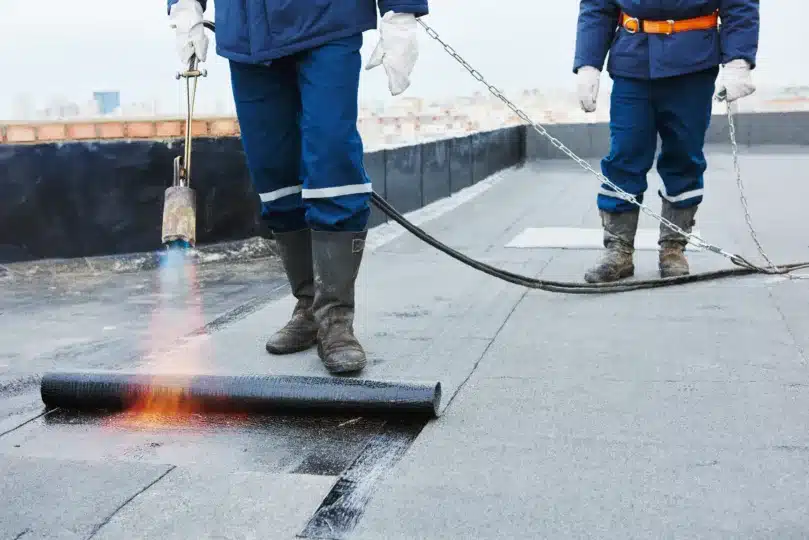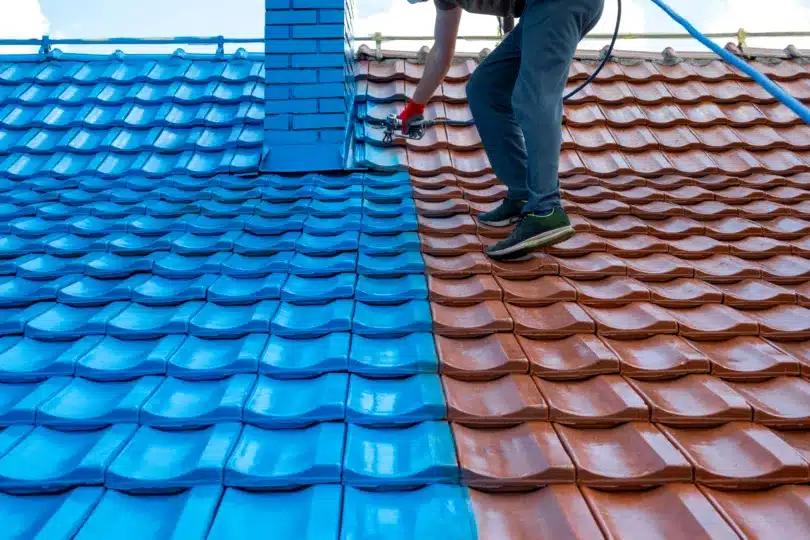In This Article
TLDR; Roof Underlayment Video
When looking for a new roof in Florida, it’s normal to be surprised at the different parts of a roof replacement. Many people imagine that replacing a roof is as simple as taking off the old shingles and installing new ones, but the truth is that your roofing system is complex. And if you’re going to keep your home dry and safe, then you’ll need a sturdy roof underlayment.
If you’re looking for someone to help you understand roof underlayment installation, there’s no better teacher than Classic Roofing and Construction. We’ve been installing roofs in Florida for over two decades, so we know all about how underlayment protects your home. But we’ll start by answering the fundamental question: What is a roof underlayment?
What Is a Roof Underlayment?

Replacing a roof doesn’t just mean replacing shingles—it means replacing your entire roofing system. This starts by replacing your roof decking, and then on top of that we install a roof underlayment. This can be made of several materials, but the idea is that it lasts as a water-resistant layer to protect your decking. This way, even if water gets past your shingles, it won’t reach your decking and cause structural damage.
Roof underlayment is about more than protection against moisture, though. It’s also an additional layer of insulation for your home and helps sound-proof your roof. Thanks to these features, your underlayment can make sure that your home stays cool and that storms don’t wake you up in the night.
CLASSIC ROOFING – FAMILY OWNED AND SERVING THE COMMUNITY FOR OVER 20 YEARS
Now that you understand roof underlayments in general, we can talk about the different types of underlayments available for your Florida home.
Best Roof Underlayment Types in Florida
In Florida, there are three main types of roofing underlayment that have withstood the test of time: synthetic, fiber, and rubberized asphalt underlayments. Each of these comes with its own pros and cons, so we’ll look at each one individually so you can get a better idea of what they will and won’t offer.
Synthetic Underlayments

Synthetic roof underlayments have become the go-to for Florida roofers. Made of woven propylene or polypropylene fibers, synthetic underlayments repel water and can last for 25-50 years. This means that if you’re getting a shingle roof, you won’t have to worry about your underlayment giving out before your shingles.
Across the board, synthetic underlayments have stellar performance. This includes being:
- Durable and not susceptible to breakdown from water
- Thin enough that it can roll out across a roof without requiring you to pay for extra material
- Lightweight, so it doesn’t weigh down your decking
In fact, synthetic underlayments are so durable that they can act as secondary layers of protection for your home. This means that if you’re missing a shingle or two, your underlayment will be able to protect your home by itself for up to six months. Protection like this is why most roofers encourage getting synthetic underlayments, even though they are a bit more expensive than other options.
Felt Underlayment
Before synthetic underlayments entered the market, felt was the most popular underlayment material. And it’s easy to see why—felt is inexpensive and provides respectable water resistance. However, a few other factors show that felt can’t really compare to synthetic when it comes to performance.
For one thing, it’s possible for felt to get wet during installation. If this happens, it can wrinkle and create an uneven surface for your shingles to sit on, which means the contractor will need to use more material, which the homeowner then has to pay for.
And once it’s installed, felt still can’t compare to synthetic underlayments. For one thing, it’s vulnerable to wind damage, which means it can easily be torn up and damaged if your roof loses a shingle. Additionally, contractors tend to not like felt as much because it’s heavier and slipper, which makes installation much harder.
For all of these reasons, you might not be surprised to learn that some roofing warranties require a home to have a synthetic underlayment installed. And with an average lifespan of around 12 years, it’s no wonder felt has lost popularity in recent years. While felt was great in its time, it just can’t compare to the modern protection of a synthetic roof underlayment.
Rubberized Asphalt Underlayment
While felt underlayment can’t compare to synthetic, rubberized asphalt certainly can. Unlike other underlayments on this list, rubberized asphalt can be applied all over your roof or only in spots that are more vulnerable to water damage, like near your vents or around a chimney.
Commonly referred to as a peel-and-stick underlayment, rubberized asphalt has a lot to offer Florida homes. These features include:
- Easy, quick installation
- Water resistance on par with synthetic underlayments
- Good durability and a lifespan of up to 35 years
- Thick, unmatched insulation
All of these factors make rubberized asphalt underlayments very popular for flat roofs. But that doesn’t mean that these underlayments don’t have cons!
One of the biggest issues is that rubberized asphalt underlayments are tough to remove. Thanks to their peel and stick functionality, they’re extremely difficult to remove once they’ve been installed. This could mean having to replace parts of your decking when it’s time to replace your underlayment.
Still, these make for strong roof underlayments for flat roofs, so they’re definitely worth considering!
Get a Strong, Robust New Roof in Florida
When you need a new roof, you don’t want to settle for a just-okay roof. Naturally, you want the best! And Classic knows how to make sure you get it. With 20 years in business and hundreds of rave reviews, we’ve proven that we’re your go-to local roofing contractors. Now that you have a good understanding of roof underlayments, let’s talk about how Classic can get you a great roof that more than meets your needs.
It all starts with our free, no-obligation roofing estimate. Once we’ve prepared your estimate, you’ll have a clear outline of exactly what you’re paying for and how much it costs—including your roof underlayment. This way, you have complete control and transparency with every part of your roof. Because it’s your home, and you deserve the peace of mind of knowing that you’ve got a robust, durable roofing system.
If you’re ready to get a new roof that has gold-standard protection at every layer, give us a call. We’ve been in this business for over 20 years, and we know that you’ll love our Classic way of doing things!






